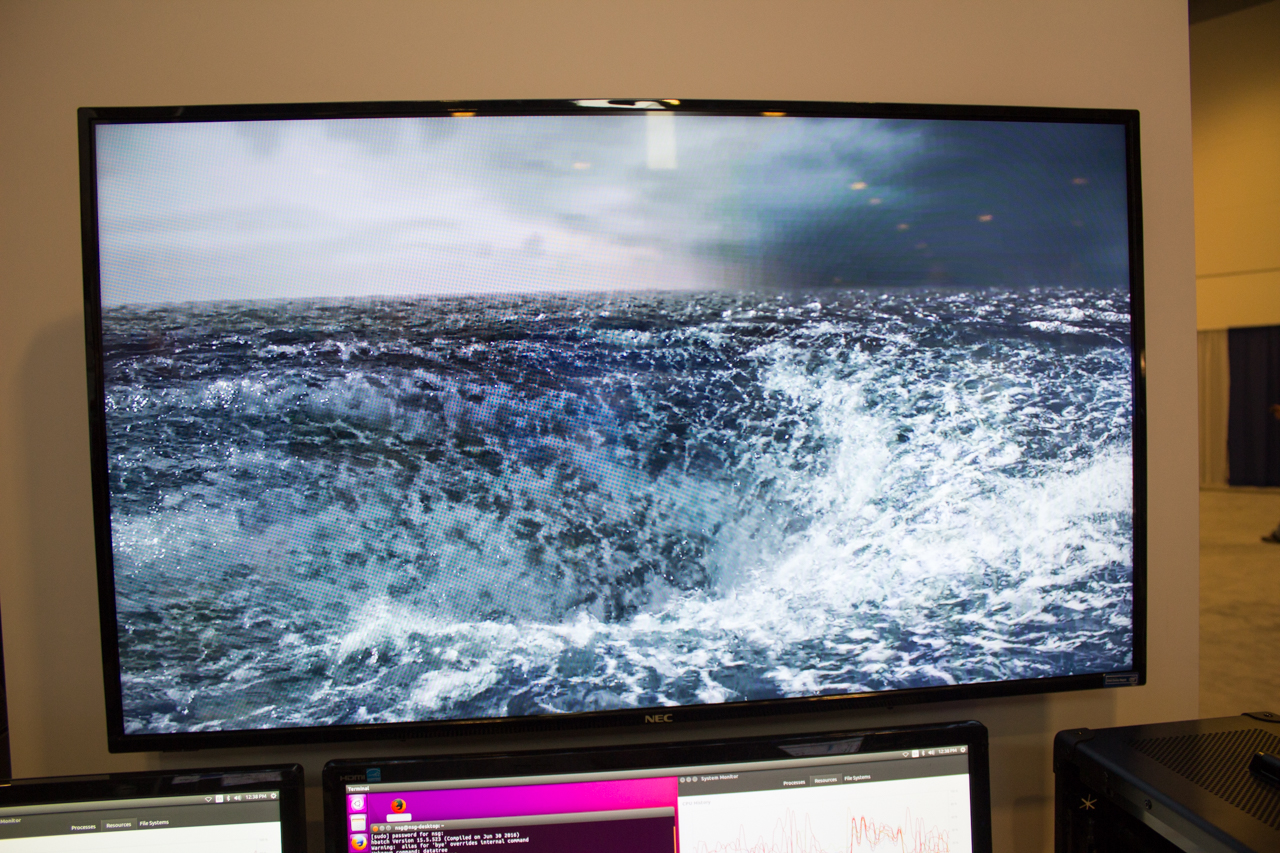Intel Optane Pictured And Coming To Client First
Intel's Optane (3D XPoint memory technology) appears to be further along the development cycle than what we saw from Micron last week. Intel is already working with an ASIC controller for memory management and reaffirmed to us that a client product will ship through retail channels before the end of the year.
The company displayed Optane working on the show floor at two separate workstations. The first cycled through synthetic benchmarks to show scaling performance at increasing queue depths. The second focused on real-world applications testing, with software rendering over a billion particles. (Many Bothans died to get us this information picture.)
In the image above, we got our first look at Optane in what appears to be a retail-ready, half-height add-in card form factor next to a DC P3700 enterprise SSD. The only thing missing on the black Optane product is a retail sticker and skull moniker that dates back to Intel's first enterprise-to-client product, Skulltrail.
It might not be the plans of the Death Star, but getting a picture of the top of Optane was difficult. Even with a drive in hand, Intel was not willing to to give media free access to snap images of the top cover. The two systems on the show floor were open for all to see, but only the bottom side was visible.
This angle did allow us to spot the PCIe 3.0 card utilizing four lanes to connect to the host system, though.
Intel's "client workload" goes well beyond what most consider consumer applications. In this SideFX Houdini render test, the system sports 64GB of DDR4 memory and a 140GB Optane SSD acting as a swap file. If you are not familiar with the term, a swap file holds data in virtual memory on the disk drive that does not fit into system memory. Windows will build the file and dynamically control the size while moving data in and out of memory when needed.
The seven-second scene takes 35 hours to render on an Intel 750 Series SSD, and 70% of the time, the CPU was waiting for storage data. The Optane SSD completed the task in just 10 hours, a 3.7x decrease in render time. Optane left the CPU waiting just 20% of the time.
Get Tom's Hardware's best news and in-depth reviews, straight to your inbox.
Optane makes a great swap file drive if you run an application that needs more high-speed memory than available, but we find this test only slightly more impressive than using the technology for a portable hard drive.
If your concept of client workloads are more in line with my own, then the performance data provided by Intel using PCMark's Vantage software holds more comparative value. Optane's cell structure works differently than NAND, and that delivers higher performance at lower queue depths. Even entry-level SSDs are fast enough to keep consumer workloads from reaching more than four queues 90% of the time. Optane's reduced latency powers through consumer applications so rapidly that even reaching queue depth two may become difficult without heavy multi-tasking.
Hopefully, Optane for the client market doesn't end at swap file use, and Intel will see the benefits of making extremely high-performance, low-latency memory available for storage. Optane will be expensive compared to NAND flash products that are now available for as low as $0.25 per Gigabyte. Intel doesn't seem too worried about pushing component pricing boundaries for those living on the computing edge.

Chris Ramseyer was a senior contributing editor for Tom's Hardware. He tested and reviewed consumer storage.
-
AndrewJacksonZA Many *D*othans, Chris, many Dothans.Reply
http://bash.org/?494970
Thanks for the article. :-) -
JakeWearingKhakis Awesome info, I won't ask what kind of favors you did for the picture.Reply
Also, why is PCMark showing scores for Windows Vista startup? I guess something that takes forever to load should be used as a test lol... -
ssdpro They demo'd a 140GB drive... time to start the slow ramp to reasonable capacity over the next 7 years.Reply -
CRamseyer I think PCMark 8 would make it too easy for us to compare Intel's numbers to our own. We will have to go back home and run some tests to get a better understanding of the results.Reply



